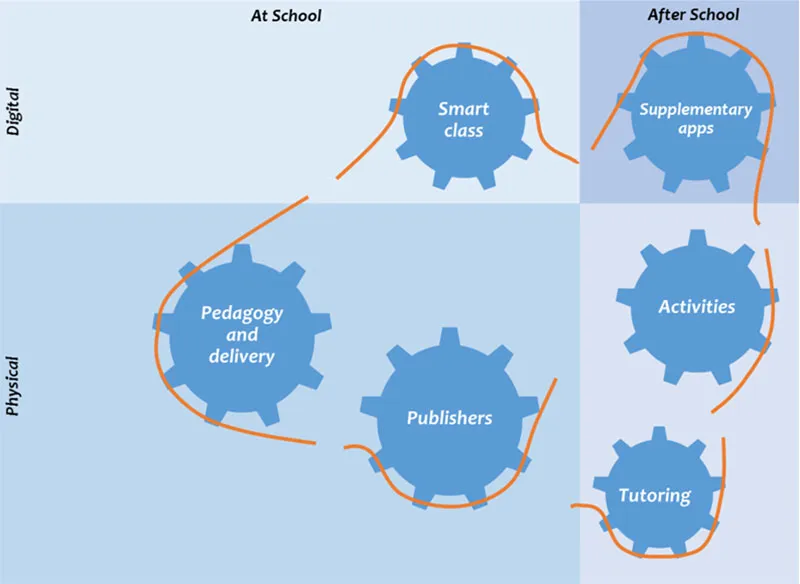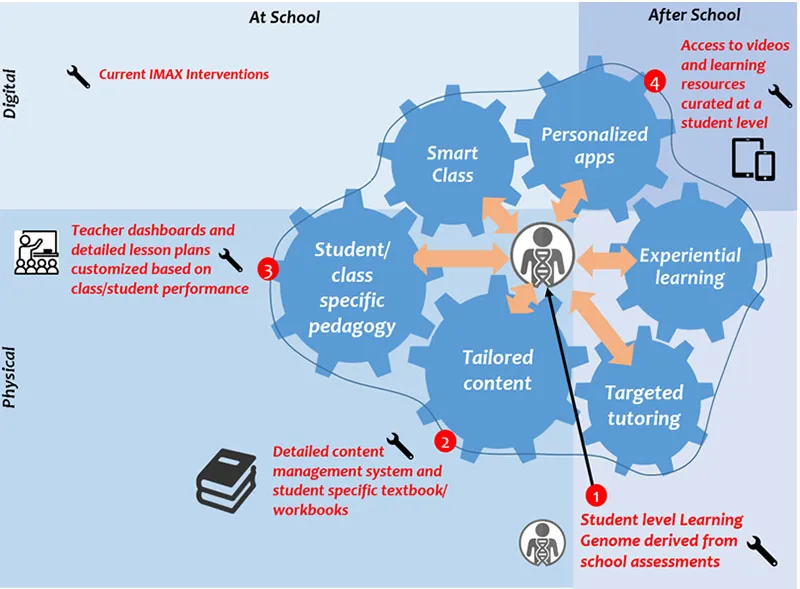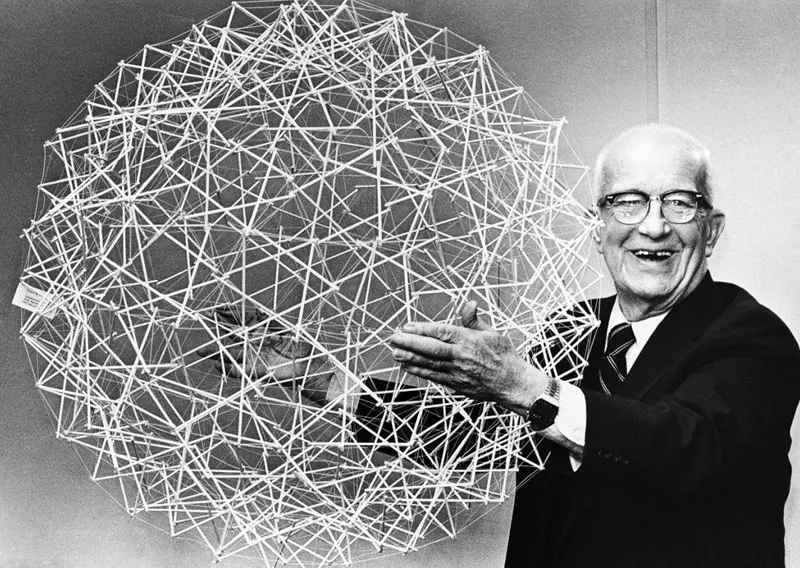250 million students in 250 million classrooms: the future of school education in India
In April 1961, Richard Buckminster Fuller, one of the great renaissance figures of the 20th century, addressed a gathering of pedagogues in a small university town in the US Midwest. Titled, ‘Education Automation: Freeing the Scholar to Return to His Studies’, this lecture remains one of the seminal expositions on the future of education. In a piece dense with insight, there is one passage that is especially prophetic:
“Real education, however, will be something to which individuals will discipline themselves spontaneously under the stimulus of their own ticker tapes — their individually unique chromosomes. All people have their own chromosomal patterns. No two persons have the same appetite at the same time. There is no reason why they should. There is no reason why everyone should be interested in the geography of Venezuela on the same day and hour unless there is some “news” event there, such as a revolution. However, most of us are going to be interested in the geography of Venezuela at some time — our own time — but not all on the same day. Simultaneous curricula are obsolete. We must make all the information immediately available over the two way TVs ready for the different individual human chromosomal ticker-tapes to call for it”
Most of us remember Fuller as the person behind the geodesic dome for which he is immortalised in the fullerene carbon molecule. It is less known that he was also one of the most insightful and forward thinkers on education ever.
Fifty years following his landmark lecture we are now at the cusp of realising Fuller’s dream of “chromosomal” personalised education for the hundreds of millions of students in India.
Setting the context
With 250 million children attending school, India has the largest number of enrollments in the world (China has less than 200 million). Even more striking is the role of the private sector, which operates 25 percent of the 1.5 million schools in India but accounts for over 40 percent of the total school enrollments; a share that will only increase given the public’s predilection for private sector providers, coupled with the government’s push towards becoming a payer for services as opposed to a provider through legislations such as the Right to Education Act.
All is not well though.
Disconnected Gears
The current state of education in India, be it in private sector or government schools, can be best described as an ecosystem of disconnected ‘learning gears’ as seen in the graphic below:

- Textbook publishing is far removed from the realities of the classroom and not customized to make content more timely and relevant.
- Pedagogy and teacher improvement initiatives are neither tailored to the teaching capacity of instructors (most teachers are under-qualified) nor to the learning capabilities of students.
- Most smart-class technologies have worked more as a marketing tool for enrollments than for improving learning outcomes.
- Tutoring and after school initiatives, once considered supplementary education, have now almost become a parallel school system as most schools are not able to customize instruction to ensure that very few students are left behind.
Combined, these lead to a frustrating experience and poor learning outcomes for the student; in addition, there is economic wastage due to duplication of pedagogy (after-school tutoring) and investments in technology that don’t deliver (many smart-class products).
Central to this disconnect is the lack of a fundamental understanding of how each student learns and how one can use this knowledge to interlock the ‘gears’ of the system.
Can we find a way to solve this?
Putting it together
Enter school exams. Assessments have always been central to formal education but there has been scant innovation in using them to objectively understand student learning gaps and capabilities of instructors.
Can we re-invent school exams not just to ‘glue’ together pedagogy, infrastructure and content delivery at the school level but also create the foundational data-set for personalised learning?
In 2013, Naveen Mandava and Varun Kumar started Xamcheck (Disclosure: Xamcheckis an Aspada portfolio company) with this very vision. They realised that while a tech platform can achieve exponential scale in an all-digital learning environment, the real deal is in building a viable and fast-scaling business model that works well both in the digital world and in the offline pen-paper-textbook system. The reality in India is that ‘going off-line’ is currently the only way of reaching meaningful scale in the world’s largest school ecosystem given that the vast majority of schools will certainly not be able to go completely digital for at least the next 10 years.
Fast forward three years and Xamcheck’s IMAX platform has delivered personalised content curated through school assessment data to over 100,000 students. Importantly, the program has been able to prove that it works at scale in schools that have monthly school fees of as low as $20 and in remote towns with populations of less than 50,000.
What is the IMAX platform? IMAX starts off by taking control of all of the internal assessments of private K-12 schools—from designing, delivering and evaluating all of the pen-paper tests to developing personalised report cards that provide students granular feedback on their learning gaps. It then uses this proprietary student data to provide students with customised textbooks/workbooks and digital learning tools that help them navigate through specific learning gaps in ways that are most suited to their unique aptitudes and interests.
Core to such systems that provide personalised content is the need for proprietary assessment engines that marry pedagogy architectures such as Bloom’s Taxonomy and data science techniques to convert routine school exams into a veritable vault of data on the students’ interests and capabilities – or what I call the “Learning Genome”.
I beilieve that the true power of such a Learning Genome is not just in enabling personalization but in also helping mesh together the disconnected gears of learning in a school (see graphic below).

However, the Learning Genome in itself does not have the means of effecting this convergence; a full stack approach does. Full stack represents holistic control of all of the elements (content, assessments, technology and pedagogy) of the value chain that define the student’s learning experience. We believe it is the only way to ensure a threshold quality of education delivery to reduce the inequity in learning outcomes that currently exist because of the wide variance in financial standing and academic capabilities of schools. Creating tangible impact is therefore not just about intelligent report cards but to be deeply invested in making sure that the information in the Learning Genome is used to deliver meaningful teacher improvement tools and also power after-school learning experiences.
Still, how does one achieve rapid scale with the seemingly contradictory notion of deep engagement?
Two principles help in this regard:
- Humans are generally adverse to dramatic behavioural change. Therefore, if you want to get to a lot of schools and still significantly push the bar on innovation, you need to find a way create efficiencies in the existing school system without subverting it. Teams therefore need to spend considerable time to understand the mindset of school entrepreneurs and the apprehension of teachers towards pedagogy changes in order to design programs that manage these concerns and turn pedagogues into champions of the platform rather than ‘friction elements’. This is a key accelerant of scale. Naveen has a great post on how Xamcheck tackled this here.
- Rapid application of the design->pilot->scale->automate cycle is another key tool to reduce operational complexity dramatically. These may be initiatives such as moving to a distributor led sales model from direct sales force or in transitioning from in-house content development to a curated content marketplace.
“Freeing the scholar to return to her studies”
While we are not yet at a point in time where we can realise Fuller’s idea of making simultaneous curricula obsolete, predictive personalised learning (think of it as Google Now of learning) will indeed be a reality for almost every school going child in India in the next 10 years, thanks to exponential increases in the affordability of personal digital devices and rapid advances in data science.
Imagine 250 million students each in a ‘classroom of one’, learning all the time, everywhere and in ways tailored to their unique Learning Genome. Now, that would make Bucky smile!

Image Credits: i.imgur







